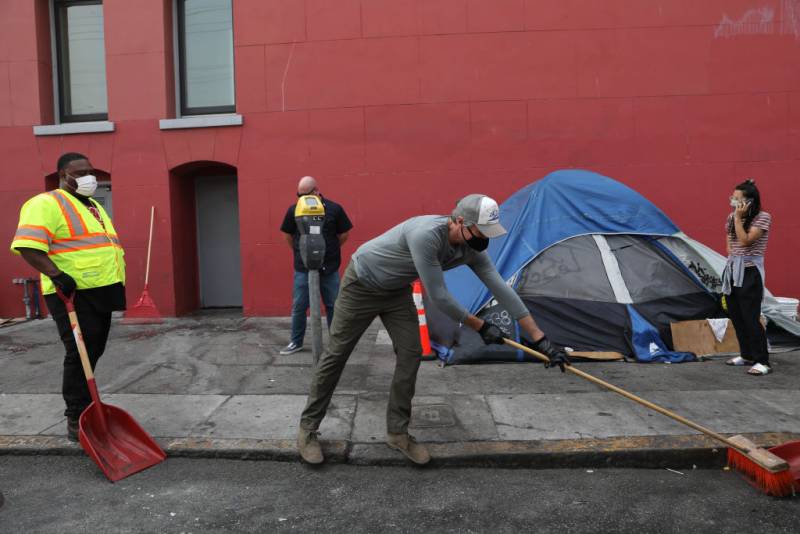Newsom, the former mayor of San Francisco, has made homelessness and housing a focus of his administration. Last year, the Legislature approved $12 billion for new housing and treatment beds for the unhoused, and this year Newsom has proposed an additional $2 billion primarily to shelter people suffering from psychosis, schizophrenia and behavioral health disorders.
The governor’s office plans to boost the program with more money for psychologists, treatment beds and services, although officials did not provide an estimate of how much it might cost.
Newsom has frequently referred to distressing behavior that’s become increasingly common on the streets in some California cities, calling it heartbreaking and maddening and saying residents are right to complain that government is not doing enough.
People with addiction issues or mental health disorders often pinball among various public agencies, namely hospitals, courts and jails. There is rarely one single place that manages someone’s health and offers steady and safe housing, combined with resource-intensive care.
California, like the rest of the country, suffers from a severe shortage of treatment beds.
“One of the most heartbreaking, heart-wrenching and yet curable challenges that we face … is how do we serve the needs of individuals who are the sickest of the sick?” Dr. Mark Ghaly, secretary of the California Health and Human Services Agency, said in advance of Newsom’s announcement.
Ghaly said he expects the program, called Care Court, to apply to as many as 12,000 people in California, not all of whom need to be unhoused.
Compare that to just over 200 people forced into court-ordered treatment last year under Laura’s Law, a state program for people with severe and persistent mental illness who may pose a risk to themselves or others, he said. The program is optional, and just over half of California’s 58 counties participate.
The governor said that, under his proposal, those in need would have a say in their treatment plan and have a public defender to represent them. Most importantly, the proposal allows a broader array of people, including family members, outreach workers and first responders, to refer the person for help, he said. Care could last up to 24 months.

